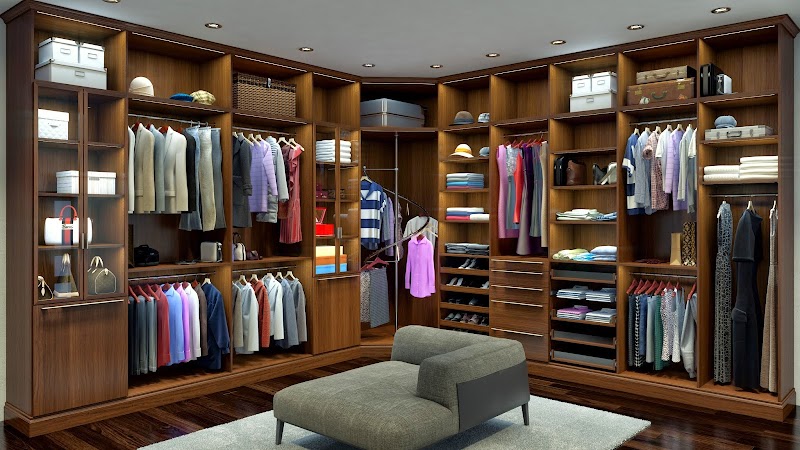Standard closet dimensions can vary depending on the type of closet and location it will be installed in. However, there are some common measurements for closets which can serve as a guide when planning a new or custom closet installation. Here are some of the most typical closet dimensions:
- Reach-in closets are the most common type of closet and usually have a depth of 24 inches (61 cm), a width of 6 feet (183 cm) and a standard height of 8 feet (244 cm).
- Walk-in closets can vary in size, but typically are at least 4 feet (122 cm) deep, 5 feet (152 cm) wide and 7 feet (213 cm) high.
- Linen closets can vary in size but are typically around 18 inches (46 cm) deep, 24 inches (61 cm) wide and 84 inches (213 cm) high.
- Pantry closets are usually 24 inches (61 cm) deep, 36 inches (91 cm) wide and 84 inches (213 cm) high.
- Mudroom closets can vary greatly in size but are generally at least 24 inches (61 cm) deep, 48 inches (122 cm) wide and 84 inches (213 cm) high.
It’s important to note that these dimensions are not set in stone and can be adjusted based on individual needs and the space available. Custom closet manufacturers can work with clients to create a layout and design that suits their specific needs. Additionally, it’s important to take into consideration the use of the closet, such as clothing storage, a pantry or a linen closet. This can impact the dimensions and layout as well.

Standard Closet Dimensions & Sizes
| Type | Common Sizes and Dimensions |
|---|---|
| Walk-in Closet | Minimum size of 4 feet wide by 4 feet deep; up to 100 sq. ft. or more |
| Reach-in Closet | Width varies from 3 to 10 feet; depth varies from 2 to 4 feet; standard height of 7 feet |
| Armoire | Width ranges from 24 to 48 inches; height ranges from 65 to 80 inches; depth ranges from 20 to 24 inches |
| Wardrobe Closet | Width ranges from 24 to 48 inches; height ranges from 64 to 91 inches; depth ranges from 14 to 27 inches |
Guide to Standard Closet: References and Resources
There are a few resources available that provide detailed information on standard closet dimensions. Some examples include:
- The website of a home design or renovation company, such as HGTV or Houzz. These sites often have articles and guides that offer detailed information on different types of closets and their dimensions.
- Home improvement stores, such as Home Depot or Lowe’s, may also have guides or brochures available in-store or online that provide information on standard closet dimensions.
- Industry organizations, such as the National Association of Home Builders (NAHB) or the National Kitchen and Bath Association (NKBA), may also have resources available that provide information on standard closet dimensions.
- Books or publications focused on home design or organization may also contain information on standard closet dimensions.
When researching standard closet dimensions, it’s important to consider factors such as the type of clothing or items that will be stored in the closet, the size of the room or space where the closet will be located, and any additional features or customization that may be needed.
Ultimately, the best way to ensure that a closet meets your specific needs and requirements is to work with a professional designer or contractor who can provide personalized recommendations and guidance.
If you’d like to delve deeper into the topic of Dimensions, we encourage you to utilize our search feature in KOBI International or visit the official websites and references for accessing relevant materials.

